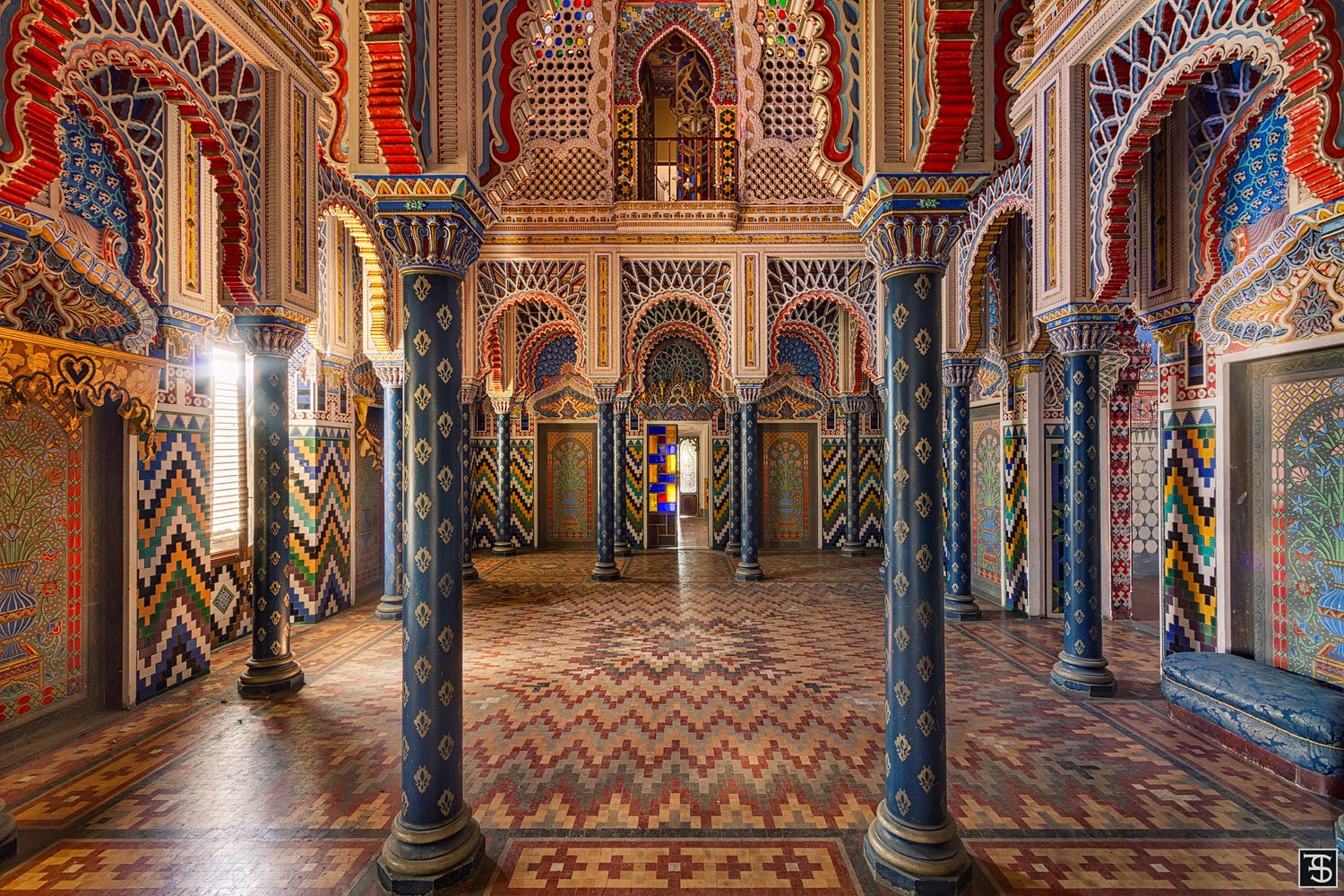
Another reference to Eastern culture occurs when, later on, part of the army of Gup City meet a "shadow warrior" who has difficulties with speaking but can communicate in Abhinaya, a classical Indian dance which he uses as a language. As pages in books they share many particulars with the game of cards in Alice in Wonderland. The 'pages' whom Haroun meets at Gup City owe their names to a pun on pages in both the senses of servants and of pages in books. Haroun and the hoopoe are joined by two fish as companions, Bagha and Goopy, whose names, as Rushdie points out in the glossary, are derived from a film by Satyajit Ray, the well-known Indian film director. The various colours of the ocean recall the vividness which is certainly one of the most striking features of the stories of this famous collection, with their countless references to precious gems of various colours. Haroun is accompanied by a Water Genie, who seems to have sprung directly from the Arabian Nights. A kind of mechanical hoopoe bird will carry Haroun to the Ocean of the Streams of Story and to Gup City, which is the first stage in his quest. As Rashid explains to Haroun, the spirits of dead kings live on in the guise of hoopoe birds (25), who are also said to be helpful companions on quests (64). These elements of European story-telling mix with allusions to the East and to Eastern mythology. The motif of dream vision, like the quest motif, can be traced back to older European literary traditions they are the basis upon which many famous works of classical antiquity and the Middle Ages are built (See, e.g., Clemen 1963: 68-70 Edwards 1989: 23-32). As in dreams, the experiences of his quest refer back to what happened in real life on the previous days and weeks. Like Alice, Haroun finds out that he has been asleep while engaged in his adventures. When Alice awakes at the end of the book, she finds out that her adventures in wonderland have taken place in a dream. Another motif current in this tradition is dreaming. In these books, children, like knights in medieval and Renaissance romances, embark on perilous journeys and undergo exciting adventures to fulfill a certain mission (Kullmann 1995: 120f.). The use of the quest motif as a narrative frame obviously goes back to the English tradition of children's books which originates in Charles Kingsley's Water-Babies and Lewis Carroll's Alice-books. Like Bastian/Atréju in The Neverending Story, Haroun engages in a sort of chivalrous quest to recover lost areas of the imagination. The name of the city is later revealed to be Kahani, "story". Infantine Empress in Ende's book, this lack of a name is obviously due to a collective lack of imagination. Other elements of the plot, however, resemble Michael Ende's Unendliche Geschichte ('Neverending Story', published in 1979): The city where the Khalifas live is "so ruinously sad that it has forgotten its name" (15). The names of the characters as well as the settings are obviously Indian some of the names are explained in a glossary appended to the book. The story is characterized by a vast range of intertextual and intercultural references. His mother returns to the family to complete the happy ending. As a reward, the king of Gup provides him with a happy ending: Haroun awakes in his bed on the houseboat and finds that his father has recovered his gift of story-telling. After visiting Gup City which is oppressed by Khattam-Shud, the cultmaster, Haroun finally manages to stop the source which is poisoning the ocean of stories. The ocean turns out to be poisoned by a tyrannous "Cultmaster" (148) who aims at controlling the world. Instead of experiencing a beautiful love story, however, he undergoes a nightmare.


A Water Genie takes him to the Ocean of the Streams of Story and invites him to drink of it.

#1001 ARABIAN NIGHTS STORIES CREATURES PLUS#
Having taken residence on one of this lake's famous tourist house boats, called Arabian Nights Plus One, Haroun embarks on a quest to recover his father's lost powers of story-telling. Haroun accompanies his father to the beautiful Dull Lake which closely resembles the Dal Lake in Kashmir. In Rushdie's book, Haroun is the son of Rashid Khalifa, a famous story-teller, who loses his powers of story-telling when his wife leaves him for Mr Sengupta, a town clerk who hates fictional stories. Bechert 1993: 65), and the Arabian Nights who feature the famous caliph Haroun al Rashid. The title alludes to two outstanding Eastern collections of stories: the Indian Kathasaritsagara ("Ocean of the Streams of Story" e.g. In 1990 Salman Rushdie published a children's book entitled Haroun and the Sea of Stories. Eastern and Western Story-Telling in Salman Rushdie's Haroun and the Sea of Stories


 0 kommentar(er)
0 kommentar(er)
